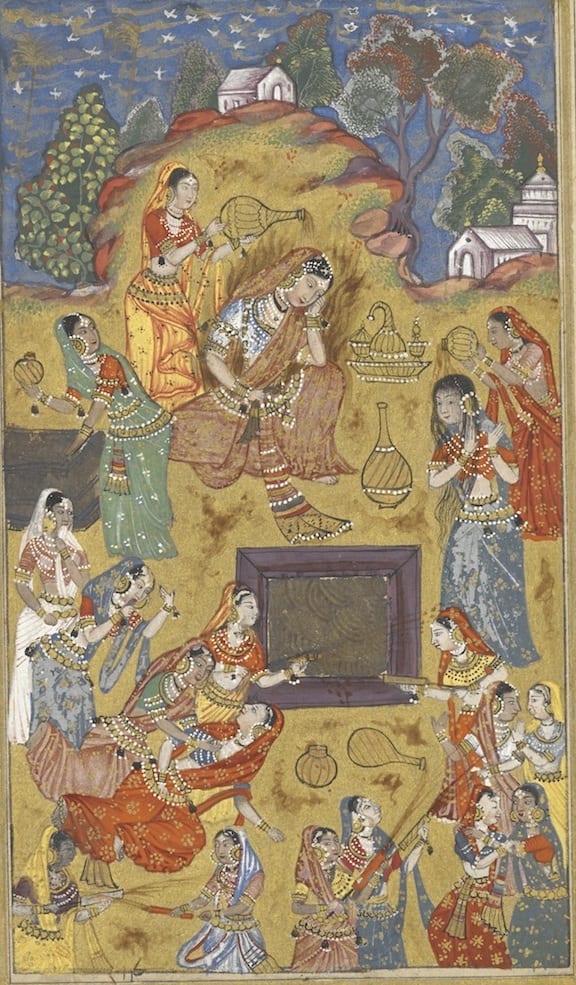Persian, Arabic, and Vernacular Poetry in North India and the Deccan
(SALC 22604/32605)
gehe gehe kalau kāvyaṃ …
In the Kali age, there is a poem in every house …
Vidyāpati (ca. 1370-1460, Mithila), Kīrtilatā
The Indian subcontinent is home to some of the most vibrant literary traditions in world history. The aim of this course is to introduce students to the main trends in the premodern (/pre-nineteenth century) literature of South Asia through a selection of poetic and theoretical texts translated from a variety of languages (Arabic, Bengali, Dakani, Hindi, Maithili, Marathi, Persian, Panjabi, Sanskrit, Urdu, etc.) . We will discuss issues of literary historiography, the relations between orality and writing, and the shared aesthetic world of poetry, music, and visual arts. We will review the basic principles of Perso-Arabic and vernacular poetics through a selection of representative theoretical treatises and poems. We will also explore the linguistic ecology of the Subcontinent, the formation of vernacular literary traditions, multilingual literacy, and the role of literature in social interactions and community building in premodern South Asia. Every week the first half of the class will be devoted to the historical context and conceptual background of the texts we will read in the second half. Attention will be given to the original languages in which those texts were composed as well as the modes of performance of the poems and songs we will read together.
No prior knowledge of South Asian languages is required. The course is the perfect complement to the Introduction to South Asian Civilizations sequence (SALC 20100-20200). Beyond its focus on South Asia, students interested in classics, poetics, rhetoric, musicology, theater studies, and comparative literature will find plenty of food for thought in the readings, lectures, and class discussions. For students interested in languages, it is an ideal way to have a lively introduction to the linguistic variety of South Asia.
Thibaut d’Hubert (dhubert@uchicago.edu), Autumn.

